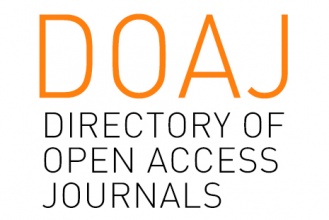Capacity of ChatGPT, Deepseek, and Gemini in predicting major potential drug interactions in adults within the Intensive Care Unit
DOI:
https://doi.org/10.30968/jhphs.2025.161.1262Abstract
Objective: evaluate the ability of the ChatGPT v.3.5, DeepSeek v-3, and Gemini 2.0 flash to accurately predict major potential drug interactions (DIs) in critically ill patients. Methods: A list of 20 DIs was compiled from previously published literature. The Micromedex and Drugs.com databases were used as references. A specific prompt was designed to interact with the tools. The generated responses were stored for subsequent analysis by a pharmacist. Specificity, sensitivity, negative predictive value (NPV), positive predictive value (PPV), accuracy, and agreement were calculated for each tool based on the responses regarding DDI severity, which were categorized into five levels: contraindicated, major, moderate, minor, and no interaction. Additionally, the responses related to the mechanism of action and recommended management for each DDI were categorized as “adequate and accurate,” “adequate but inaccurate”, and “inadequate.” Results: When the Micromedex was used as a reference, ChatGPT performed better, achieving an accuracy rate of 75%, while DeepSeek and Gemini scored 70% and 65%, respectively. Overall, there was an improvement in the performance of all tools when Drugs.com was used as the reference, with accuracy rates of 80% for DeepSeek and 75% for both ChatGPT and Gemini. However, the agreement on the severity of DDIs between the tools and references was 0.354 (weak) for Drugs.com and 0.410 (moderate) for Micromedex. In general, two “inadequate” responses and 10 “adequate but inaccurate” responses regarding the mechanism of action and recommended management were observed when compared with Micromedex (14 DDIs analyzed), while eight “inadequate” responses and 21 “adequate but inaccurate” responses were found when compared with Drugs.com (17 DDIs analyzed). Conclusion: The tools analyzed show promise to assist healthcare professionals in predicting DDI in adults hospitalized in the intensive care unit (ICU). However, their use should be approached with caution, as they may generate incorrect/inaccurate information. Additional advancements are required to ensure their reliable application in clinical practice.
Downloads
Downloads
Published
How to Cite
Issue
Section
License
Copyright (c) 2025 Authors

This work is licensed under a Creative Commons Attribution 4.0 International License.
The authors hereby transfer, assign, or otherwise convey to JHPHS : (1) the right to grant permission to republish or reprint the stated material, in whole or in part, without a fee; (2) the right to print republish copies for free distribution or sale; and (3) the right to republish the stated material in any format (electronic or printed). In addition, the undersigned affirms that the article described above has not previously been published, in whole or part, is not subject to copyright or other rights except by the author(s), and has not been submitted for publication elsewhere, except as communicated in writing to JHPHS with this document.
Authors retain copyright and grant the journal right of first publication with the work simultaneously licensed under a Creative Commons Attribution License (CC-BY) that allows others to share the work with an acknowledgement of the work's authorship and initial publication in this journal.
Serlf-archiving policy
This journal permits and encourages authors to post and archive the final pdf of the articles submitted to the journal on personal websites or institutional repositories after publication, while providing bibliographic details that credit its publication in this journal.








